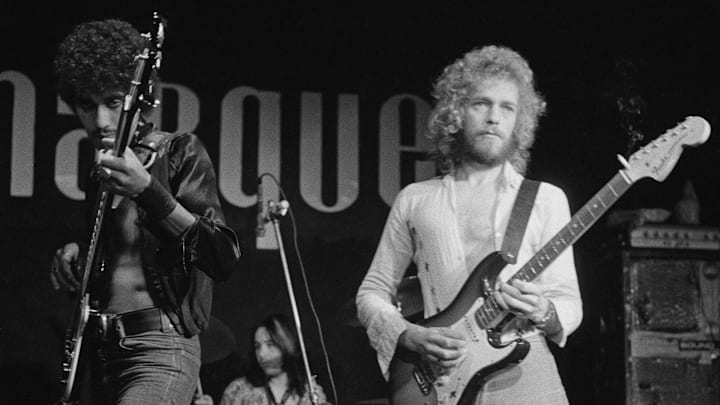KEYS, VIOLA, AND SAX, OH MY – NOTHING MISCELLANEOUS HERE
JOHN CALE (Velvet Underground) – “THE BLACK ANGEL’S DEATH SONG”
Cale was a visionary. An explorer. He was classically trained on the viola and from an early age was intrigued by how it could be blended into modern experimental music. Then he came to the USA and met musicians like La Monte Young and Lou Reed who also accepted no boundaries when it came to modern music.
Lou Reed may be the greatest songwriter in rock & roll history, but he didn’t exactly play well with others. He and Cale made it through two ground-breaking Velvet Underground albums before Reed exiled Cale. But they created some glorious sounds. Cale’s other-worldly electric viola gives “The Black Angel’s Death Song” a nightmarish quality that you simply can’t shake. It’s cacophonous and melodic in equal measure.
On a live recording from The Complete Matrix Tapes, Reed intro’d the song by saying they stopped playing it back in the day because clubs would empty out whenever they did. He then launches into a strong version with guitars taking the original Cale viola part. And you realize that Reed may well have parted company with Cale because that viola was so engrossing that it served to pull attention away from Reed’s lyrics. The bottom line – the song is pretty good without Cale. It’s iconic with him and his viola.
DICK PARRY (Pink Floyd) – “MONEY”
Saxophonist Dick Parry and Pink Floyd guitarist David Gilmour were long-time friends, and Gilmour had Parry play on some of Floyd’s best-known 1970s hits. On Dark Side of the Moon, Parry contributes two elite solos. He was more prominent in “Us and Them,” because there is no corresponding guitar solo. On “Money,” Parry begins his jam just past the two-minute mark and carries it for almost a full minute, then Gilmour’s guitar steps in with its own solo.
Totally different from the lyrical, gentle romanticism of “Us and Them,” Parry seems to twist and wrench the notes out of his sax during “Money.” It could be a horn playing some stepped-down jump blues, but it’s a sax playing jazz-rock, and every note is engrossing. To top it off, as Gilmour explained, he created a 7/4 time signature within which Parry had to somehow fit all those expressive notes.
STEVIE WONDER – “SUPERSTITION”
Maybe you know the back story of Stevie Wonder’s “Superstition.” If not, here’s a condensed version. Jeff Beck played guitar on Wonder’s “Lookin’ For Another Pure Love,” and Wonder was going to repay the kindness by giving him “Superstition” in return. Then execs at Motown heard the track and killed that plan. This was going on Wonder’s Talking Book album.
Wonder opens the song with ten seconds of drums before the instantly recognizable Hohner clavinet enters the picture. In the next 20 seconds, before Stevie begins his vocals, and gradually adds horns to the mix, he invented the multi-track keyboard groove that everyone would try to emulate. People still study how he achieved the impossible interplay between bouncing melodic lines and pulsating beats.
Wonder himself could not really recreate the exact beat when he played it live. It was a product of imagination, technology, and flat-out brilliant virtuosity. About ten years ago, an online journal – Noise Addicts – dissected the track and determined that Wonder was in fact, playing 8 distinct keyboard parts, then blending and cross-fading to create the exact sound he had in his head. No wonder why so many key players have tried and failed over the years to recapture that magic.
